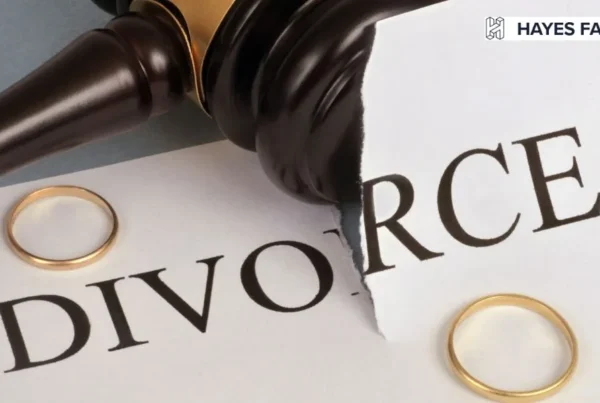
There are several sources of information on state and national divorce rates, and while they are credible sources, the percentages they report vary slightly. Despite the variations, though, the California divorce rate isn’t as bad as many people like to believe. If you are facing divorce, contact a California divorce attorney to discuss your case before taking any other action.
One of the more generous reports shows that the California divorce rate is 7.45%. This means that only about 75 people out of every 1,000 will be divorced in California based on past statistics. The same report shows that California ranks number 45 in the entire U.S. for the most divorces, which means that there are only five more states with fewer divorces than California each year per 1,000 people.
Other reports place the California divorce rate at around 9% to 10%, which still is not that high, and divorce rates have been steadily declining across the country since 1981. Analysts believe it may have to do with fewer marriages taking place to begin with, though. Below are more facts and statistics about divorce in California as well as in the U.S. as a whole.
National Marriage Rates
In 2019, the census reported that 16.3 women, age 15 and older, per every 1,000 U.S. residents were married. This number represents the national marriage rate, while 7.6 women in that age bracket per 1,000 U.S. residents were divorced.
Same-Sex Divorce Rates in California
All the most prevalent and credible research conducted on divorce rates, both statewide and national, do not show any difference in the divorce rate among heterosexual marriages and same-sex marriages. Rather, the divorce rate for same-sex divorces and traditional divorces is the same.
Reasons Why People Get Divorced
People get divorced for a number of reasons. Some factors that contribute to high divorce rates include differences in education, religious beliefs, and lifestyles. Even the time of year can affect a couple’s likelihood of staying together or seeking a divorce.
One primary factor in divorce cases is age. The age when couples marry affects their likelihood of staying together. The average age for divorce is 30 years old; however, marriages that occur between the ages of 20 and 25 show a 60% lower chance of divorce. Couples who wait until after they are 25 years old to get married have a 24% less likely chance of getting divorced.
Couples with higher levels of education are less likely to get divorced, as are couples with strong religious foundations and morals. Addiction or alcoholism of one party in a marriage can contribute to divorce. However, if both parties in a marriage are heavy drinkers, they are more likely to stay married.
Another factor that influences the divorce rates is the time of year. Divorce rates increase in March and August. Location can also affect divorce rates, as states that are located in the northeastern part of the country have the lowest marriage and divorce rates. Consequently, the southern and western U.S. states tend to have more marriages and, thus, more divorces.
The U.S. Census Bureau also reports that the primary reasons why couples in the U.S. divorce include financial trouble, infidelity, and incompatibility. Because California is a no-fault state, the reason behind a couple’s divorce isn’t relevant in court anymore. However, divorcees may relate to others with similar issues, which can be comforting for some.
California Counties and Cities With the Highest Divorce Rates
The three counties with the highest divorce rates are Shasta County (13.8%), Sonoma County (12.8%), and Sacramento County (11.3%). The three highest divorce rates by city are Redding (15%), Roseville (11.4%), and Sacramento (11.1%).
California City With the Lowest Divorce Rate
Fremont in Alameda County has the lowest California divorce rate. It also has the highest marriage rate at 61.1%.
FAQs About California Divorce Rate
How Long Is the Average Divorce in California?
Divorces in California take a minimum of six months to complete. This is because of the waiting period that must pass between filing the petition for divorce and the final hearing. Beyond the six months, the timeline can vary due to the complexity that these cases can present. Divorce length can also depend on the court schedule and other unique factors of your case. Some divorce cases are finalized shortly after the waiting period is over.
Does California Have the Highest Divorce Rate?
Some people believe that California has the most divorces of all the 50 states. However, this is not true. In fact, the divorce rate in California has been among the lowest in recent years. The divorce rate is about 90 people who get divorced per 1,000 people who get married each year in California.
What Are the Rules for Divorce in California?
Some of the requirements for getting a divorce in California include residency requirements, for which one of the spouses must have lived in California for six months prior to filing and for three months in the county where they file prior to filing. There is also a required wait period of six months between filing for divorce and being granted a divorce. These are two of the top rules for divorce in the state, though there are more requirements and conditions that must be met to be granted a divorce in California.
Can a Spouse Refuse a Divorce in California?
A spouse can refuse to sign the divorce papers in a California divorce. However, after 30 days, the petitioner will be granted a default divorce, and any conditions named in the divorce will be granted in favor of the petitioner. The petitioner may move on with the case without the cooperation of the other spouse.
Talking to a California Divorce Attorney
Collectively, the attorneys at Hayes Family Law have hundreds of hours of experience in litigation. In addition, our lead attorney is a certified legal mediator, and we also offer coaching and counseling services for our clients. Learn exactly how our law firm can benefit your case by contacting Hayes Family Law and speaking with one of our knowledgeable legal team members. We can meet the unique needs of your case.


